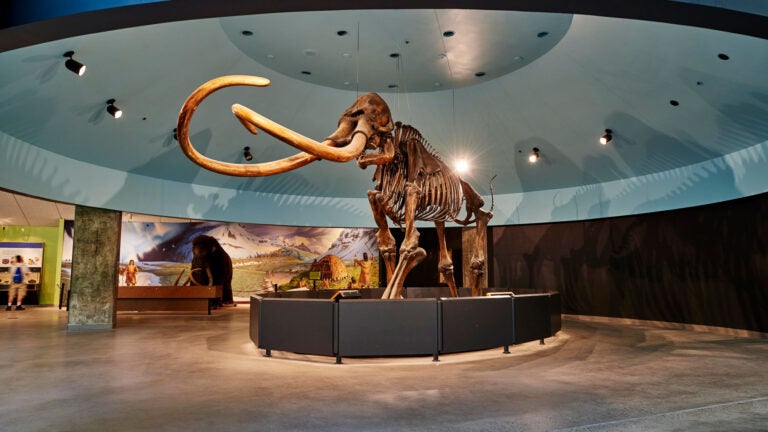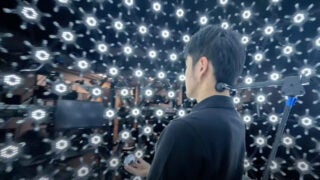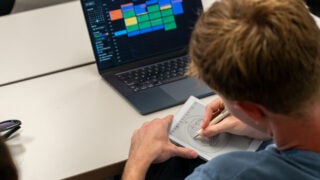
A new partnership is investigating how to design augmented reality experiences to improve education. (Photo/Mario de Lopez, La Brea Tar Pits and Museum)
USC partners with La Brea Tar Pits on augmented reality and education
Researchers look at best ways to design AR experiences for effective learning
A recent boom in augmented reality technology is leading educational institutions to explore new ways of teaching, where virtual scenes are mixed with real-life locations and objects. However, scholars also say more research is needed to understand when and how AR can be leveraged to increase knowledge rather than merely entertain visitors.
In a new partnership between USC and the Natural History Museums of Los Angeles County, which include the La Brea Tar Pits and Museum, researchers will try to understand how best to design AR experiences for effective learning.
The project is funded by a new grant from the National Science Foundation totaling $2 million.
The research will compare learning and engagement from visitors interacting with various versions of an AR experience that differ in visual immersion (touchscreen vs. low-cost 3D headset) and interactivity (selecting vs. manipulating virtual objects).
Emily Lindsey, assistant curator and excavation site director for the La Brea Tar Pits, and Benjamin Nye, the director of learning science at the USC Institute for Creative Technologies, are the principal investigators. Gale Sinatra, the Stephen H. Crocker Professor of Education Psychology at the USC Rossier School of Education, and William Swartout, chief technology officer for USC ICT, are co-principal investigators.
Augmented reality and education, in natural history
A key aspect of the project is to use AR to provide additional information about what visitors see to help dispel misconceptions about natural history.
Augmented reality offers a powerful medium to share how science happens at the La Brea Tar Pits.
Benjamin Nye
“Augmented reality offers a powerful medium to share how science happens at the La Brea Tar Pits,” Nye said. “AR can show hidden worlds connected to what you would normally see with your eyes, such as seeing the pits in different time periods. These can tell the story of not just what we know, but how we know what we know.”
Opened to the public in 1977, the La Brea Tar Pits Museum served 418,000 visitors last year with displays of Ice Age fossils from asphaltic deposits, as well as with live demonstrations of the paleontology process. With a collection of millions of fossils, the La Brea Tar Pits are a powerful resource for understanding environmental change in Los Angeles during the last 50,000 years of Earth’s history.
The new partnership will draw on USC’s expertise in technology, design and student engagement and the Natural History Museum’s expertise in paleontology and content-rich exhibits to create an experience that will help museum visitors engage with the scientific process. The goal is to improve understanding of science and reduce scientific misconceptions. Under the partnership, visitors to the museum will explore AR “time portals” where they gather evidence to distinguish between competing hypotheses and update their own hypotheses as they find new evidence.
“Certain scientific concepts, like the nature of geologic time, have historically been difficult for people to wrap their minds around,” Lindsey said. “This partnership allows us to explore the ways that new, immersive technologies can help people understand and connect with these concepts more fully.”



